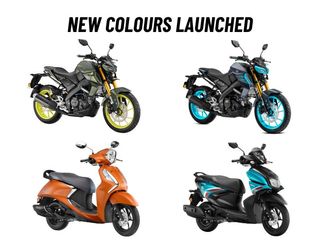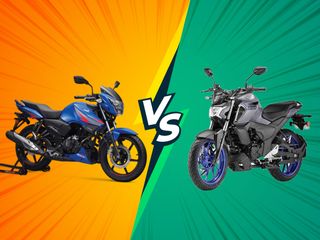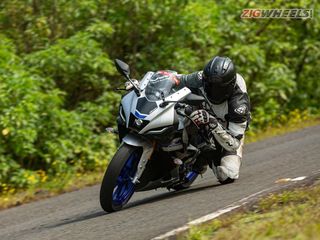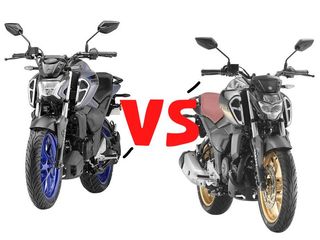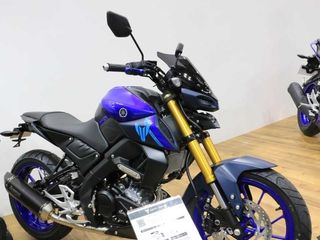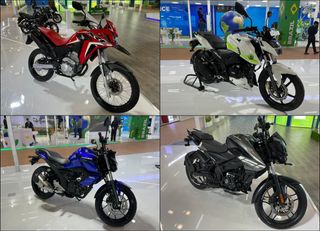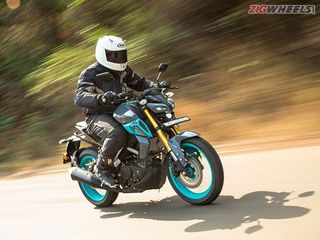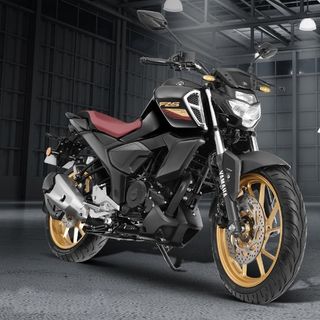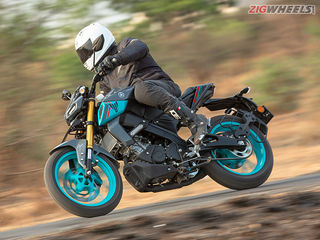New Car
Explore all New Cars of 2024
| Key Highlights | FZS-FI V3 Matte Red And Matte Grey | MT 15 V2.0 STD |
|---|---|---|
| Engine Type | Air cooled, 4-stroke, SOHC, 2-valve | Liquid cooled, 4-stroke, SOHC, 4-valve |
| Max Power | 12.4 PS @ 7250 rpm | 18.4 PS @ 10000 rpm |
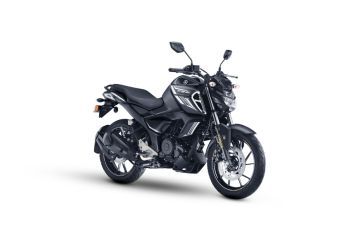
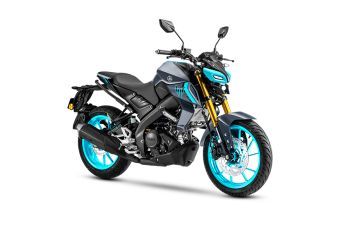
| Basic Info | Yamaha FZS-FI V3 Matte Red And Matte Grey | Yamaha MT 15 V2.0 STD |
|---|---|---|
| Rating |
520 reviews
|
1684 reviews
|
| Brand Name | Yamaha | Yamaha |
| Ex-Showroom Price | Rs. 1.21 Lakh Get On-Road Price | Rs. 1.68 Lakh Get On-Road Price |
| Engine Type | Air cooled, 4-stroke, SOHC, 2-valve | Liquid cooled, 4-stroke, SOHC, 4-valve |
| Max Power | 12.4 PS @ 7250 rpm | 18.4 PS @ 10000 rpm |
| Fuel Type | Petrol | Petrol |
| Colors | ||
| Brakes Front | Disc | Disc |
| Brakes Rear | Disc | Disc |
| Wheel Size | Front :-431.8 mm,Rear :-431.8 mm | Front :-431.8 mm Rear :-431.8 mm inch |
| Wheels Type (Pressed Steel/ Alloy) | Alloy | Alloy |
| ABS | Single Channel | Single Channel |
| Starting | Self Start Only | Self Start Only |
| Speedometer | Digital | Digital |
| EMI |
Rs. 3,512
@
9.45% (36 months)
|
Rs. 4,846
@
9.45% (36 months)
|
| Insurance | Rs. 7,140 FZS-FI V3 Insurance | Rs. 14,138 MT 15 V2.0 Insurance |
| Brochure |
Download
Brochure
|
Download
Brochure
|
Engine |
|
||||||||||||||||||||||||||||||||||||||||||||||||
|---|---|---|---|---|---|---|---|---|---|---|---|---|---|---|---|---|---|---|---|---|---|---|---|---|---|---|---|---|---|---|---|---|---|---|---|---|---|---|---|---|---|---|---|---|---|---|---|---|---|
Brakes |
|
||||||||||||||||||||||||||||||||||||||||||||||||
Performance |
|
||||||||||||||||||||||||||||||||||||||||||||||||
Tyres |
|
||||||||||||||||||||||||||||||||||||||||||||||||
Dimensions |
|
||||||||||||||||||||||||||||||||||||||||||||||||
Electricals |
|
||||||||||||||||||||||||||||||||||||||||||||||||
Features |
|





